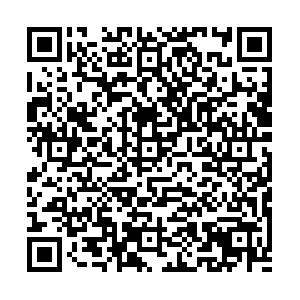Institutional and Cultural Analysis of Rituals and Academic Regulations in Chinese Ancient Acade mies
-
摘要: “尊圣”与“治学”成为古代书院教育文化传承的两大脉络,两者分别主要体现在书院的仪式与学规中,互相渗透。对书院仪式和学规进行制度文化分析:仪式中的祭祀与开讲表达了“尊圣”的教育信仰,崇拜祖先与师友讲习表达了特定的教育理念,确立了教育制度的基石;书院学规规范了“治学”的教育行为,包括制度规范、学术权威与自主办学三个方面。通过分析发现,书院教育文化蕴含着信仰自主、学术自由、人格平等和办学自主等现代教育价值观。由此获得现代启示:批判吸收古代书院教育文化,培育现代大学教育信仰;借鉴古代书院教育的制度逻辑,完善现代大学制度;融入古代书院优秀精神文化,熏陶现代大学师生的文化气质。Abstract: “Respect to the Holies” and “Academic Pursuits” were the two main threads of the education and cultural heritage of Chinese ancient academies. The two are mainly reflected in the rituals and academic regulations of academies, and they permeated each other. An institutional and cultural analysis of academies’ rituals and academic regulations shows: the sacrifice and lecturing during the rituals express the educational beliefs of “respect for the holy”;the worship of ancestors and mentoring from teachers and classmates indicate specific educational ideas and laid foundation for the education system. The academic rules of academies regulated the educational activities of “academic pursuits”, including three aspects: the system norms, academic authority and the independent running of academies. It is found that academies’ educational culture contains modern educational values such as beliefs in autonomy, academic freedom, equality of personality and university autonomy. What can be learned from this is that we should critically absorb the educational culture of ancient academies to develop educational beliefs of modern universities, draw on the institutional logic of ancient academies to improve modern university system, and incorporate the outstanding spiritual culture of ancient academies to cultivate the cultural qualities of teachers and students of modern universities.
-
[1] 李东升. 研究型大学在德国兴起的三步曲——从哈雷到哥廷根再到柏林大学的历史考察[J].广西民族大学学报(自然科学版), 2008(2):28-36. [2] 尹凯丰. 在思政课中渗透融入"书院文化"[J]. 中国教育学刊, 2019(11):108. [3] 吴增礼,肖永明,唐亚阳. 试析书院德育课程体系的构建[J]. 大学教育科学,2007(2):88-92. [4] 李邦国. 朱熹与白鹿调书院[M]. 武汉:湖北教育出版社,1989. [5] 蓝甲云,张长明,易永卿. 论中国古代书院的学礼制度[J]. 湖南大学学报(社会科学版),2005(3):15-18. [6] 邓洪波. 中国书院史资料[C]. 杭州:浙江教育出版社,1998. [7] 章柳泉. 中国书院史话——宋元明清书院的演变及其内容[M]. 北京:教育科学出版社,1981:156. [8] [宋] 徐度. 却扫编(卷上)[M]. 北京:中华书局,1985:22. [9] 张劲松. 白鹿洞规、书院科举与作为事件的书院文本——以明李龄《宫詹遗稿》为中心的考察[J]. 地方文化研究,2014(2):73-82. [10] 尹建锋,吕晓燕. 变迁中的大学知识范式和权力:西方大学章程的历史演变及其启示[J]. 高等教育研究,2016(8):75-83. [11] 宗尧,邓洪波. 学规类书院文献的价值与意义[J]. 高校图书馆工作,2019(3):79-82. [12] 王博凯,贾俊侠. 西安碑林藏柏景伟《关中书院常规》初探[J]. 唐都学刊,2016(7):68-72. [13] 邓洪波,陈志良. 从学规看明代书院之课程建设——以弘道、大科、湖南三书院为例[J]. 湖南大学学报(社会科学版), 2007(11):27-34. [14] 吴增礼."为学者而设"——古代书院学规特点[J]. 井冈山大学学报(社会科学版),2016,37(3):66-69. [15] 黄宗羲. 增补宋元学案(24)·沧州诸儒学案(卷69)[M]. 北京:中华书局,1960:53. [16] [元] 脱脱,阿鲁图. 宋史·道学传·朱熹[EB/OL].[2016-01-02] [2019-10-17].https://wenku.baidu.com/view/73119ae45901020206409c9c.html. [17] 石中英. 教育信仰与教育生活[J]. 清华大学教育研究, 2000(2):28-35. [18] 张湘韵. 现代大学书院制反思:模式移植与精神断层[J]. 贵州教育科学,2009(4):98-104. [19] 安萍. 古代书院及书院文化[J]. 兰台世界,2008(12):68-69 -

 点击查看大图
点击查看大图
计量
- 文章访问数: 619
- HTML全文浏览量: 168
- PDF下载量: 30
- 被引次数: 0



 下载:
下载: